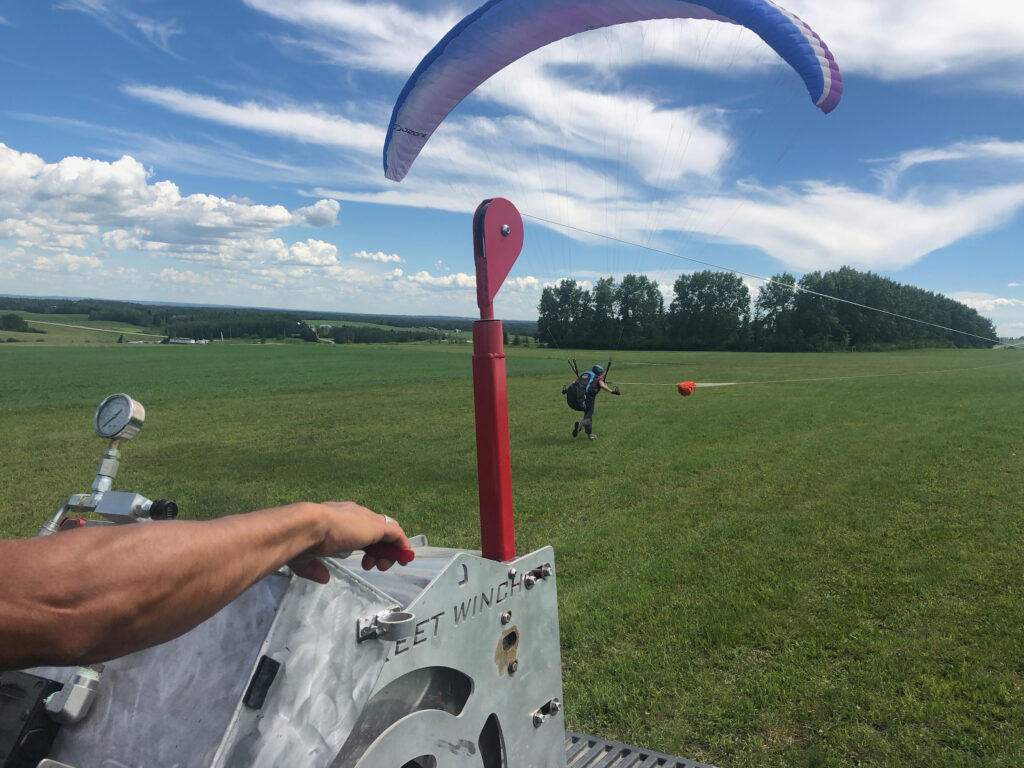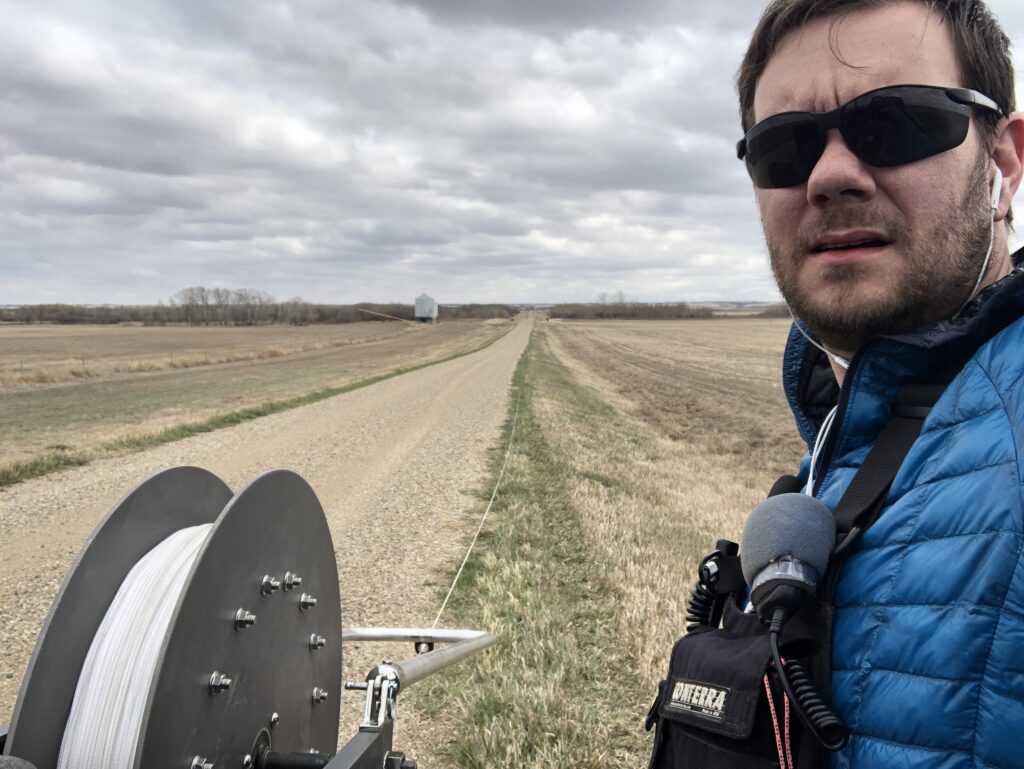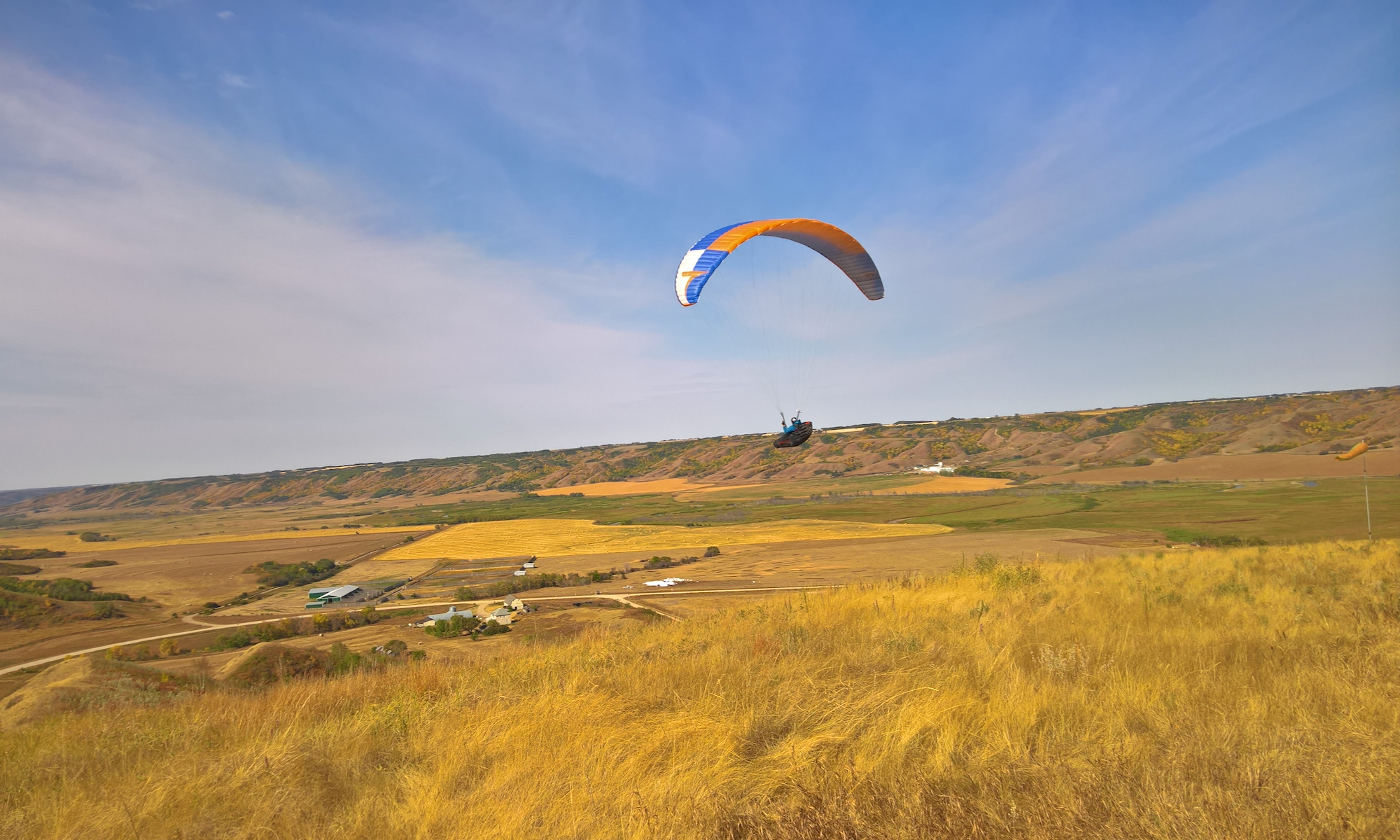
Towing is the primary way flat-land pilots get into the air. In this method of flying a specialized winch system is used to “pull” the glider into the air. This pull is achieved by the winch either remaining stationary and winding in line (called a pay-in tow), or by the winch moving and letting out line (called a pay-out tow). Gliders naturally want to fly at a slightly downward angle to conserve energy, so the pulling force of the winch provides the needed energy to allow the glider to instead climb. With either type of tow, once the pilot has reached their desired altitude they release the tow line. From there the pilot can attempt to climb in thermal lift.

Towing is a complex process involving close coordination between the pilot, tow operator, and the tow driver. It is considered a separate launch skill from foot launching due to these factors. Since machines are involved, it’s critical that all parties have the required training and know the correct safety procedures.
Prairie Paragliding primarily teaches pilots using a tow system, and our curriculum is structured to introduce new pilots to towing in a safe manner. We can also train existing pilots on tow skills.
